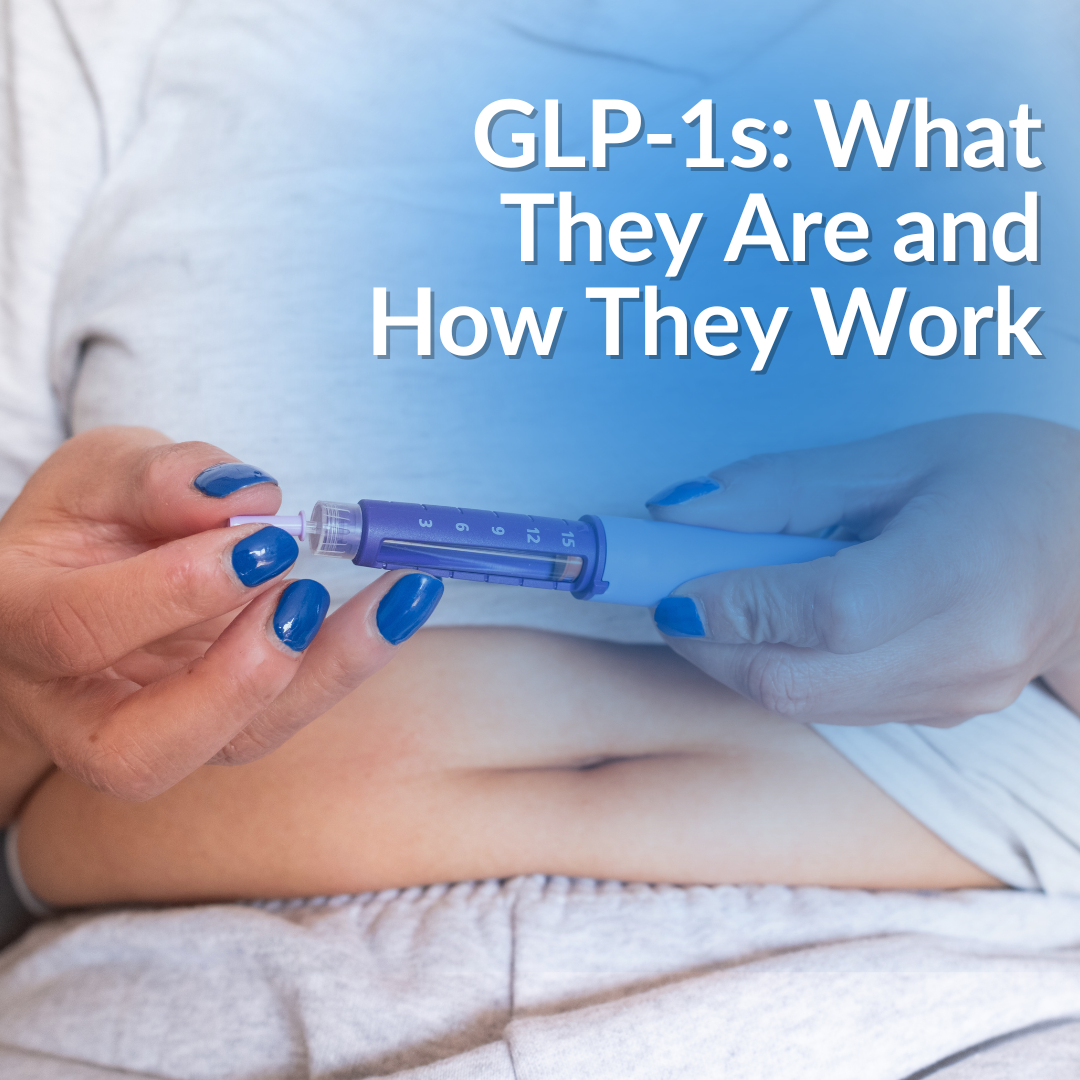
If you have the TV on for any length of time, odds are good that you’ll see a commercial promoting Ozempic or a similar medication. What are these GLP-1s that everyone is talking about?
GLP-1s, more formally called GLP-1 receptor agonists, are a relatively new and emerging class of medications used to treat diabetes and/or obesity. While the first GLP-1 medication was approved by the FDA in 2005, this class of medications has drawn new attention in the past few years as more medications have gained approval.
Wondering what these medications do—and why they’re receiving so much attention? Dr. Laurel Campbell, with West Tennessee Medical Group Primary Care & Pediatrics | Dyersburg, shares some insight below.

How Do GLP-1s Work?
To understand how these medications work, you first need to know about the GLP-1 hormone your own body produces.
Glucagon-like peptide-1 (GLP-1) is a hormone produced by the small intestine, which is responsible for triggering the pancreas to release insulin, blocking the secretion of another hormone called glucagon, slowing digestion, and making you feel full after eating.
GLP-1 agonist receptors mimic this naturally occurring hormone. As “agonists,” these medications attach to a GLP cell receptor in the body, behaving like the GLP-1 hormone. In that role, they help the body manage blood sugar more effectively, slow digestion, and increase satiety, which can lead to decreased appetite and food intake.
What Are the Different Types of GLP-1s?
The first GLP-1 receptor agonist, exenatide, was approved by the FDA in 2005 to help treat Type 2 diabetes. For a long time, this medication was the only drug of its type, but in recent years, other GLP-1 agonists have been approved for both the treatment of diabetes and the treatment of obesity.
When used to treat diabetes, GLP-1s are used alongside other medications, such as metformin, which helps the liver produce less glucose. There are several different GLP-1 receptor agonists approved for the treatment of Type 2 diabetes.

Ozempic, also called semaglutide, may be the most well-known, but five other GLP-1s in an injectable form are used to treat diabetes. Semaglutide is also available in a pill form under the brand name Rybelsus.
While studying GLP-1s and how effectively they treat diabetes, researchers discovered how significantly these medications can also affect a person’s appetite, satiety, and food intake. Prompted by that knowledge, pharmaceutical companies have since produced three GLP-1s approved specifically for the treatment of obesity.
One of those medications, Wegovy, is also FDA-approved for the treatment of cardiovascular disease. Clinical studies have shown that Wegovy, a different dosage of semaglutide, the drug found in Ozempic and Rybelsus, is effective in lowering the risk of cardiovascular events in those who are overweight or obese.
Are There Other Meds That Work Like GLP-1s?
Another class of medications, called dual GIP/GLP-1 receptor agonists, works similarly to GLP-1 receptor agonists. These medications combine the effects of a GLP-1 receptor agonist with an agonist for GIP, another hormone produced by the small intestine.
GIP, or gastric inhibitory polypeptide, has many of the same functions as GLP-1, helping the body regulate blood sugar. In addition, GIP also plays a key role in metabolizing fat in foods.
Currently, there is only one drug in this class of medications—tirzepatide, which is approved as Mounjaro for treatment of Type 2 diabetes and as Zepbound for the treatment of obesity.
Are There Any Negatives to GLP-1s?
Like any other medications, GLP-1s aren’t appropriate for every person. They can be a good option for people who have Type 2 diabetes with an A1C level that remains persistently high despite taking other medications or for those who are obese and who have tried unsuccessfully to lose weight.
Newer research indicates they may also be a tool for lowering the risk of heart disease, heart problems, and stroke in patients who are overweight or obese.
While many patients experience benefits from taking GLP-1s, there are some fairly significant side effects associated with these medications. Because these medications affect the way the body digests food, they can also cause disruptive gastrointestinal side effects, including a loss of appetite, stomach upset, nausea, vomiting, or diarrhea.
These side effects are most common in the first days and weeks after beginning GLP-1 therapy or after increasing dosage, but for some patients, they may persist for longer.
In addition to digestive symptoms, GLP-1s can cause dizziness, increased heart rate, headaches, and injection-site symptoms such as itchiness or redness. While rare, there’s also a risk of developing more serious side effects, including pancreatitis, kidney damage, gallbladder disorders, or a bowel obstruction.
Your primary care provider or a specialist can help you weigh the pros and cons of GLP-1s. They can help patients improve and protect their health, so it’s worth having a conversation with your provider if you think you could benefit.
Your primary care provider can help you navigate health challenges. Wondering whether a GLP-1 would be a good option for you? Find a primary care provider here.

